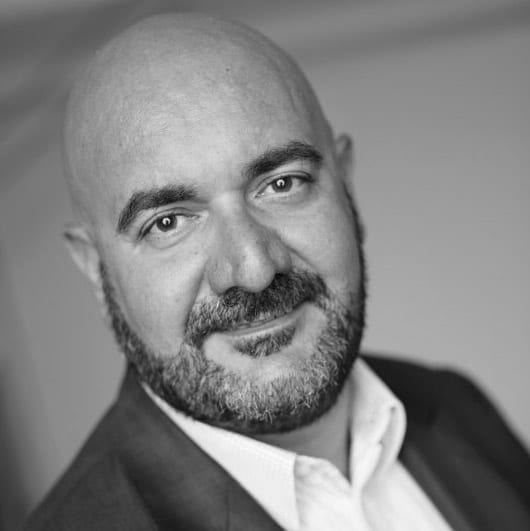This article is a guest post by Filiberto Amati, author, speaker and consultant in Branding, Innovation, Design Thinking and Commercial Excellence.
The notion of technological convergence between media, consumer electronics and IT, saw its first light in the mid of 90s: both the dot-com accelerated growth and the internet bubble, at the turn of the new millennium, were rapid catalysts for technologies to come together. But it’s in the new millennium where the industries merged, and the boundaries between product categories started to blur. In 2001, BitTorrent launched as an open source program, the first of many-to-follow peer-to-peer services. In 2003 MySpace, Blue Ray disc and Skype were born. Later in 2005, MSN Messenger (now Windows Live Messenger) offered the first video calls, and in 2006, iTunes started offering the downloading of movies and TV series. Even before the iPhone launch in 2007, media content could be downloaded, shared, and enjoyed remotely while video chatting, disrupting the 60-year-old concept of Prime-time TV. And of course the smartification of phones, which later translated in the launch of tablets and smart objects around the house, have defined, what we now call, a new digital lifestyle, by opening a new world of possibilities around us. The relevant question that Marco Bevolo – my business partner at Amati & Associates – and I, have recently tried to answer is whether the emergence of a digital lifestyle, is just technological fashion or is it already a socio-cultural trend?
In our latest research we posit that a socio-cultural trend is emerging from the technological one, and we refer to is as “the Blur”: the traditional marketing view of “a day in a life of a consumer” is an ensemble of “occasions”, each with a very clear-cut beginning and end, characterized by “transitions moments” from one to another. Those occasions and transitions are very well described as the normality in many Hollywood movies: the suburban family having breakfast in the morning, parents then commuting to work and kids going to school, then the work, with its rituals, like the coffee or the chatting at the vending machine. The very notion of Prime-time TV is based on an occasion (e.g., family gathering for dinner), hence traditional advertising is also based on the notion of occasion. The conclusion of our study is that those occasions, due to digitalization, smartification and connectivity, are blurring and becoming not-so-clear–cut any longer. We traditionally looked at work and play as two extremes of a continuum, in which we moved from one to another throughout the day. We believe that the boundaries of that continuum are overlapping, intersecting and disappearing. For example, more and more consumers have social apps and games on their phone: who hasn’t indulged on Facebook or Twitter during one of those endless, pointless and boring business meetings? And who hasn’t done work from their phone during one of the traditional leisure or family activities? There is also an emerging new group of freelancers and entrepreneurs, referred to as digital nomads, who hop from place to place, working remotely and travelling around. And while they are a niche, there is an increasing evidence of people who conduct their business from cafes, parks, public space or co-working offices and – why not? – the beach. As a response to this trend, offices are also evolving, as meeting rooms are being replaced by areas to socialize and relax: putting greens, hammocks, foosball, video-games are now part of our offices. And our homes, once our sanctuary of relaxation, our own temple of everything else which is not work, are becoming progressively more remote office spaces, with the ability to video conference, safely share files, 3d-print design mock-ups.
With regards to this social trend, some industries are leading the change: some fast food chains offer now whole day breakfast, beyond the original time constrained occasion; restaurants are proposing more and more brunches with sophisticated cocktails, as brunch is becoming a social event, beyond family gathering; urban resorts are being designed and built to address both the business and leisure needs of their customers. In the high-end luxury sector, more and more of the purchasing acts are concluded outside traditional shop-hours, as wealthy customers are increasingly connecting with boutique staff on social media. Travel retail is also reinventing itself to tap into the Blur, by becoming an hybrid platform: by targeting both business and leisure travellers; by combining digital and traditional brick and mortar channels; and by offering both a commercial platform and a marketing/ educational one, where the captive audience can experience both the brand and try the product in a controlled environment.
Moving forward, understanding “the Blur” is going to be critical for the survival of any business: from a marketing point of view, brands, which are not (yet) relevant to consumers, will be relegated to an opportunistic relationship with them, almost always price or promotion driven. And while today consumers are selecting which promotions they want to try, the increasing adoption of virtual assistants by consumers, will limit that. Algorithms are going to make decision on our behalf, especially with regards to categories in which we are not particularly attached to a brand or another (e.g., “Alexa, can you please add some toilette paper to my shopping basket?” vs. “Alexa, can you please add some Scottex to my shopping basket?”). And from the point of view of the brand owner, that means, most likely, death by algorithm.
From an innovation point of view, “the Blur” forces our hand towards a customer/consumer-centric, ecosystem-based, experience-driven innovation effort. In other words: less products specs, and more co-created experiences. Suffice to say that in a clutter-less connected home, where many consumer electronics and domestic-appliance are merging into interior-design, not many consumers are going to make their buying decision based on the difference between the 1,3 MHz or the 1,6 MHz processor embedded in the desired wall-lamp.
In conclusion, “the Blur” is a pervasive phenomenon, which is happening whether we like it or not. By studying it, we can mitigate the risks and understand its opportunities.
About the Author

Filiberto Amati, is an author, a speaker and a consultant in Branding, Innovation, Design Thinking and Commercial Excellence. ExP&G, exPhilips, exCampari, he holds an MBA from IESE Business School in Barcelona, and a DBA from the Polish Academy of Sciences in Warsaw. Filiberto lived in 8 different countries, across 2 continents. He is currently based in Warsaw, where he runs the global consulting boutique Amati & Associates, and can be reached on twitter on @filibertoamati.
